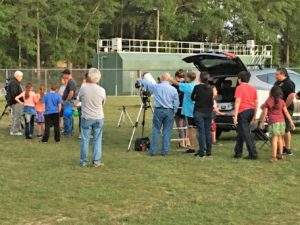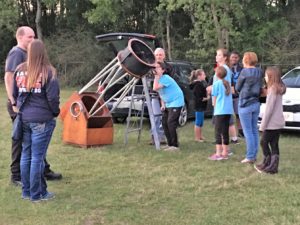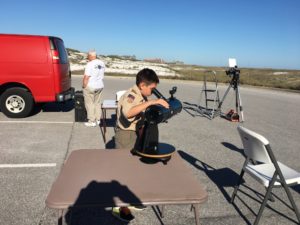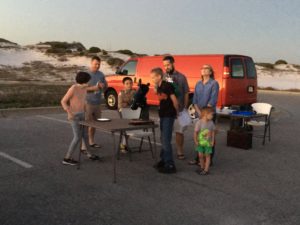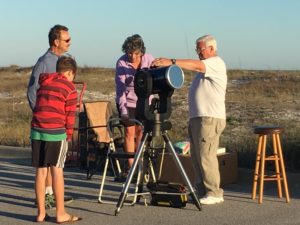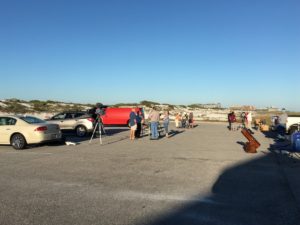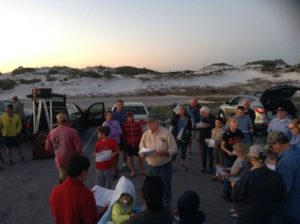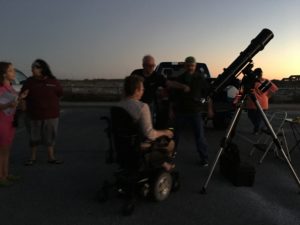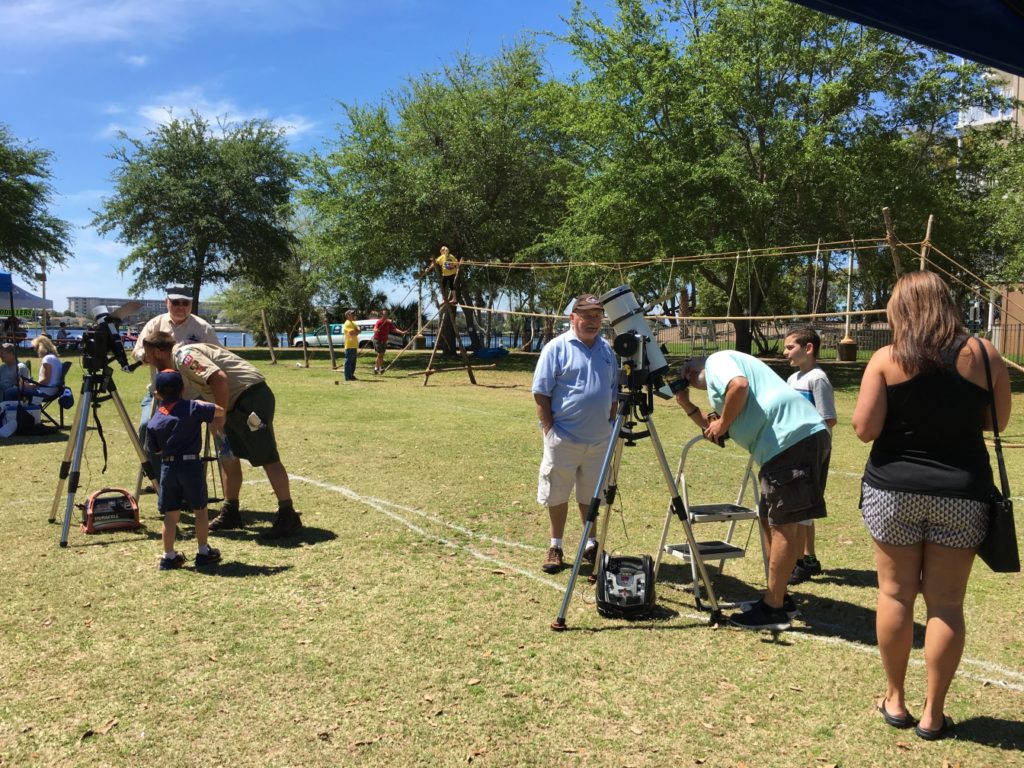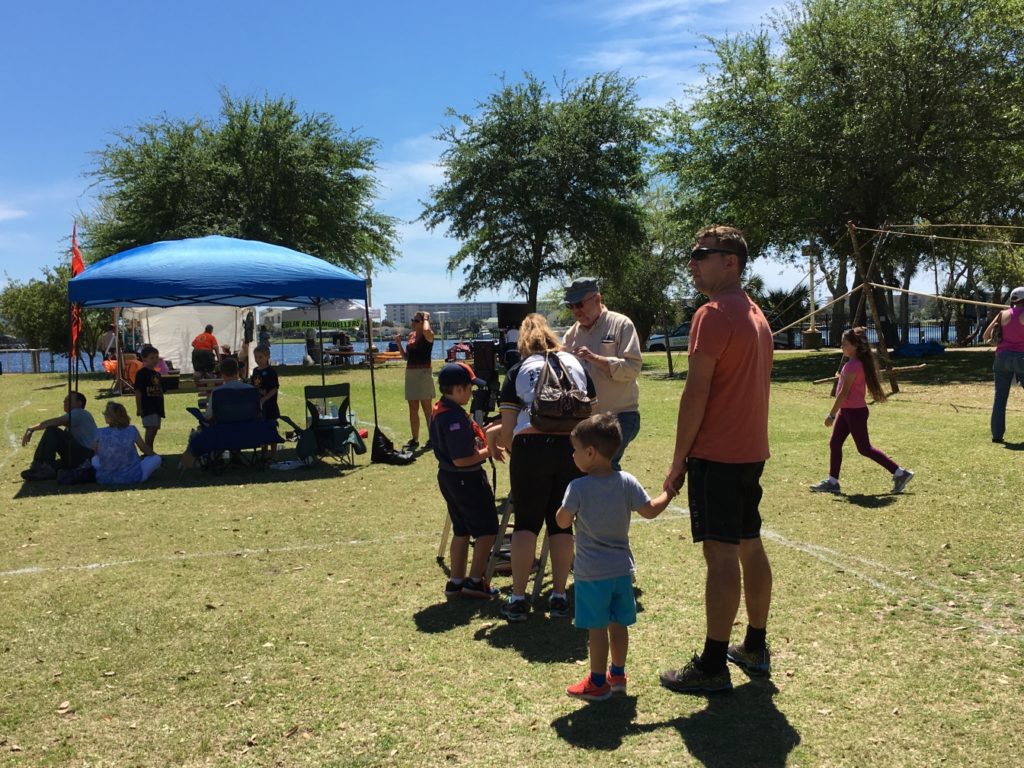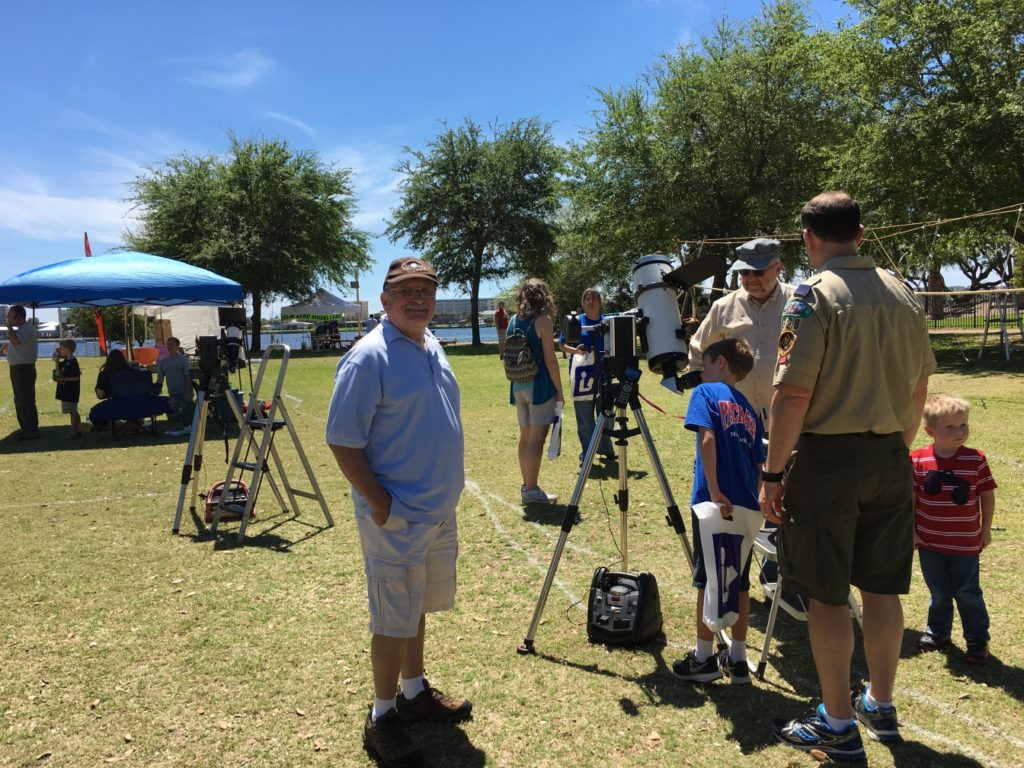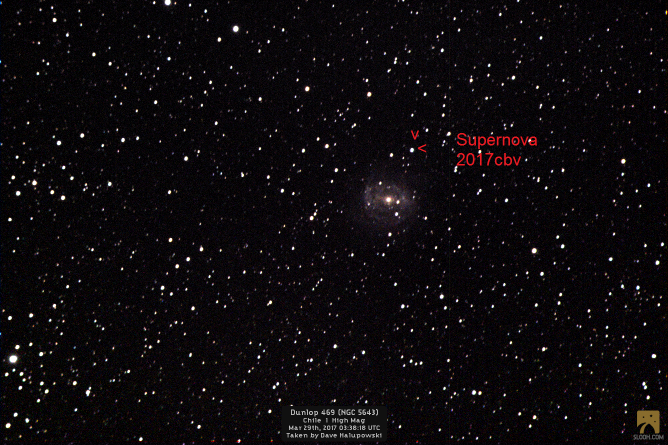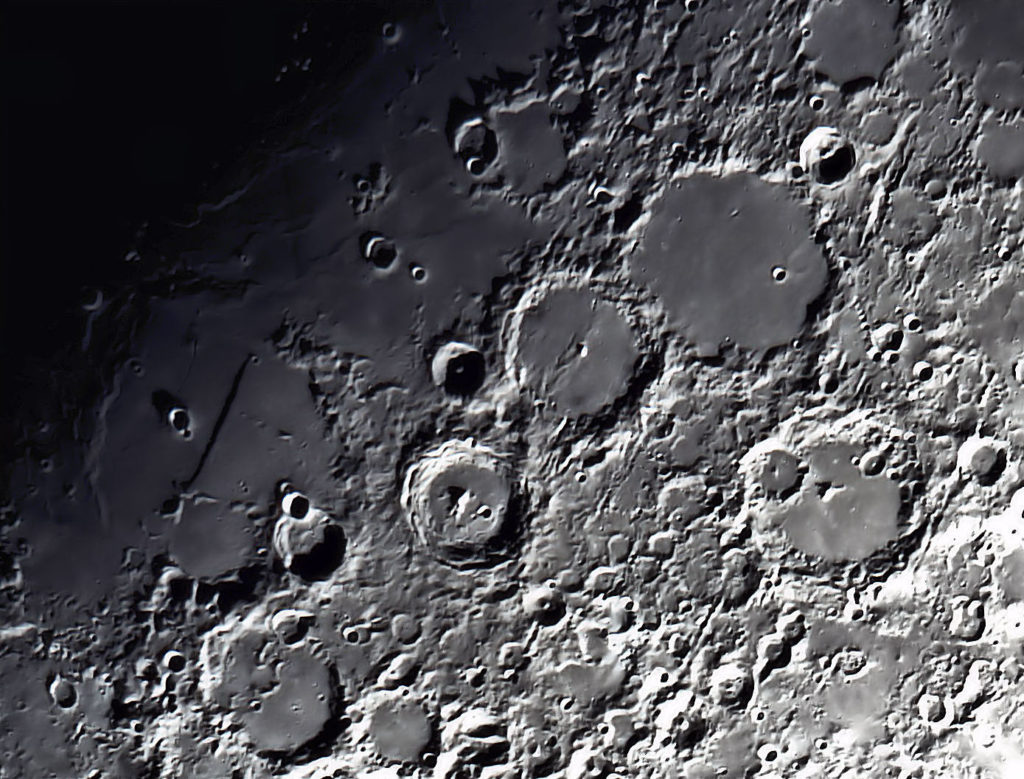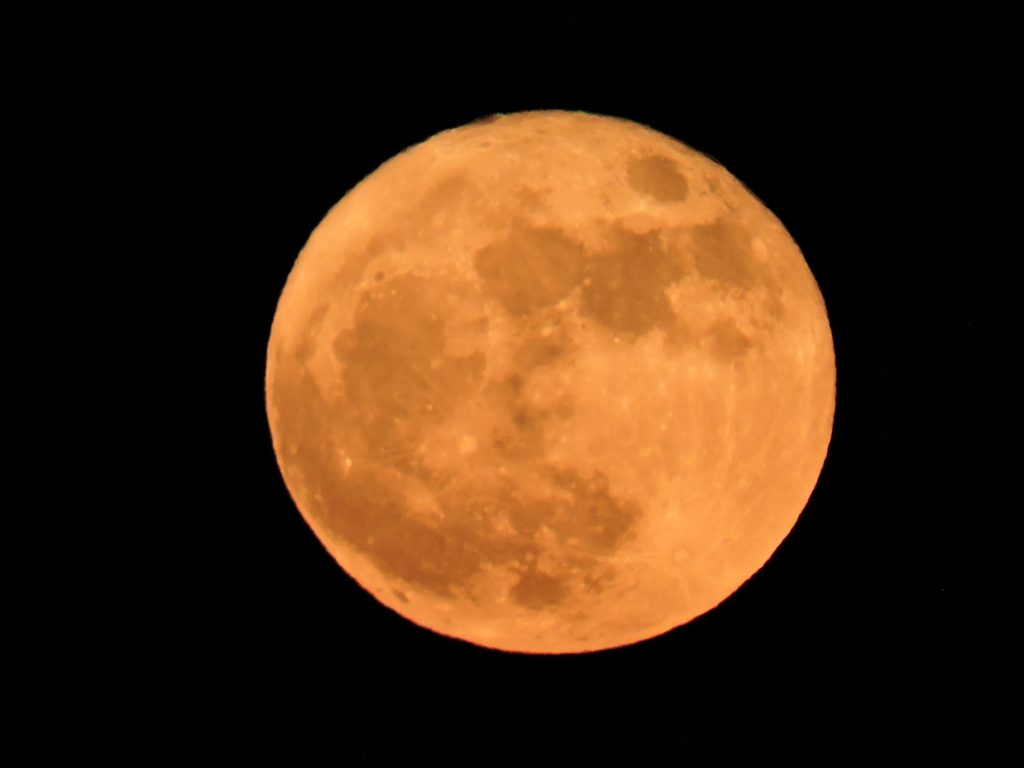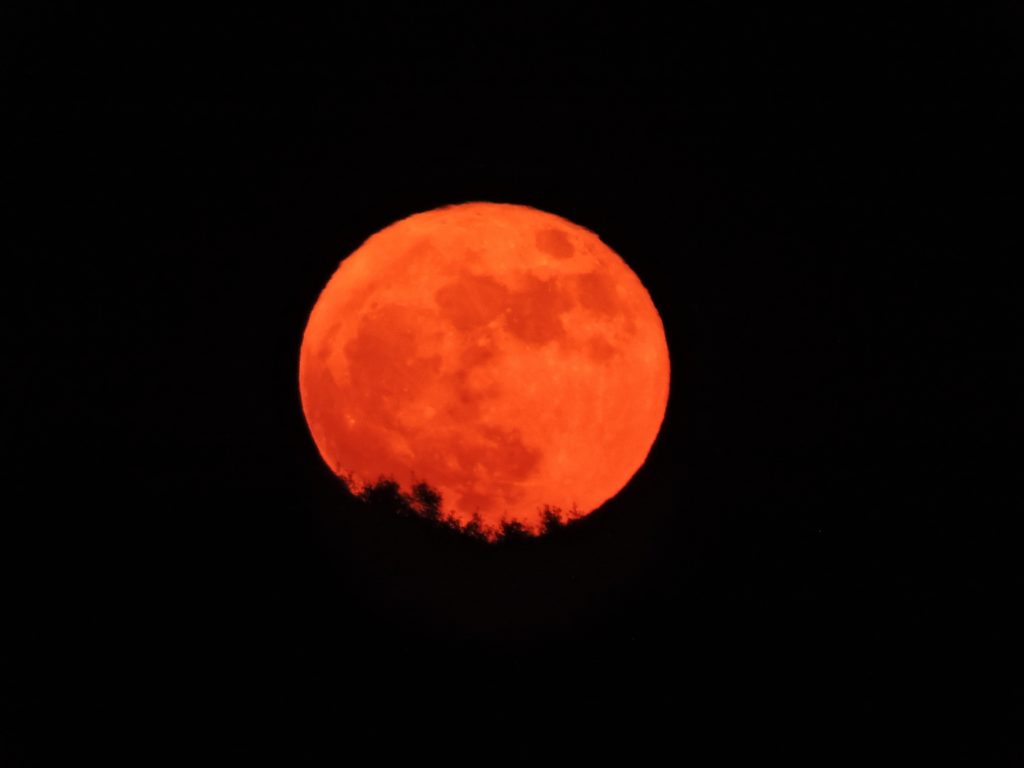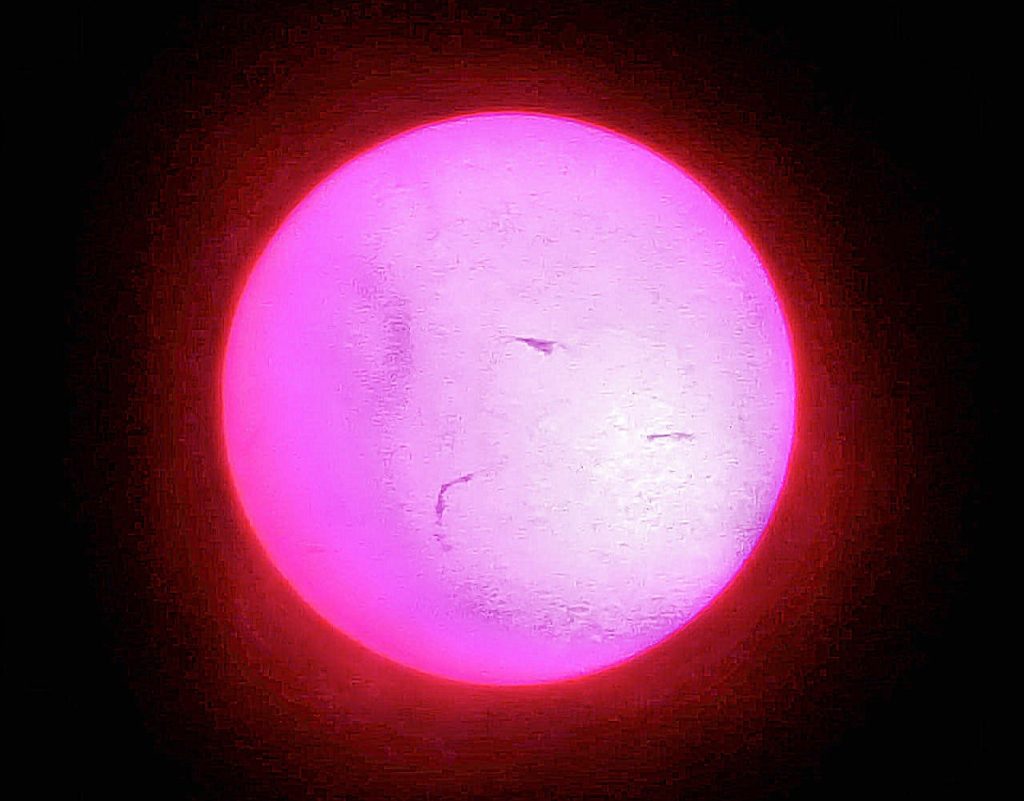The NWFAA made its first visit to Walton Middle School to provide a daytime star gaze for the school’s 8th grade science classes. Unfortunately, early morning fog thwarted the first period classes but as the day wore on the fog lifted, the clouds thinned and the by early afternoon the skies were perfectly clear.
As is usual for our daytime star gazes, Tom Haugh gave the NWFAA’s short solar presentation to a pair of classes and then, for the rest of the period, the students adjourned outside to view the Sun through the telescopes. Since there was a gap in the 8th grade class schedule, the school was able to schedule a pair of 7th grade science classes as well. In total, we hosted 11 classes with about 200 students.
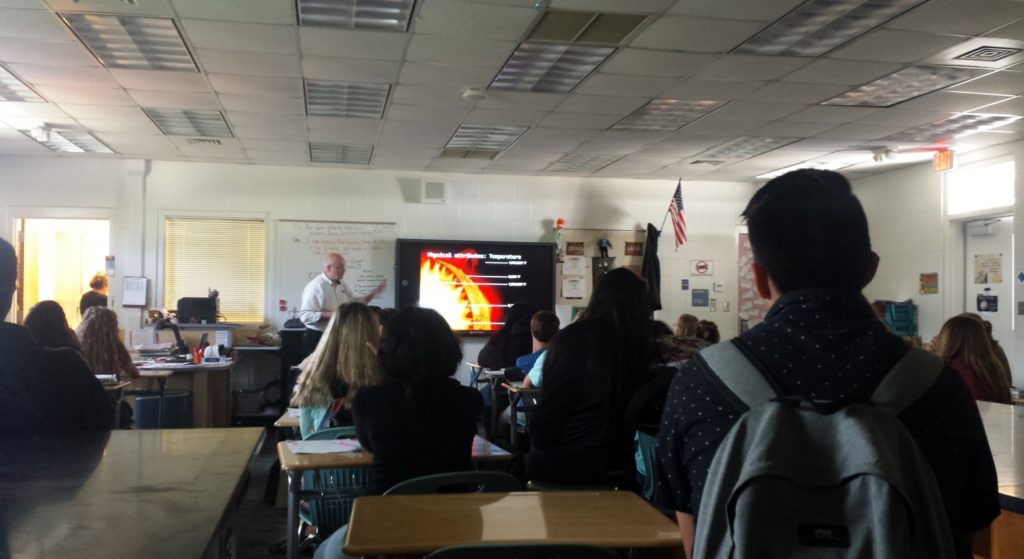
Frank Atchison provided a white light filtered scope; Dennis Hausch, a Hydrogen-alpha scope and Dave Halupowski brought his Unitron refractor and provided a projected image of the Sun. Tom brought his spectroscope to round out the group’s equipment.
 Dennis’ H-alpha scope is just starting to see through the fog. |
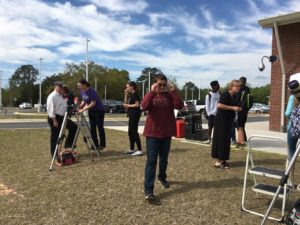 Students view the solar spectrum through Tom’s spectroscope. |
Although the Sun had been clear of sunspots for over 20 previous days, a group formed over the weekend and another set rotated into view just in time for the middle school event. Luckily, there was also a couple of small prominences visible as well.
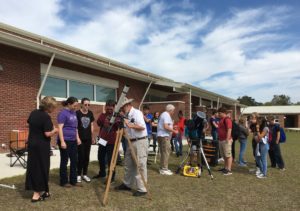 Dave demonstrates solar projection through his Unitron refractor. |
 Franks scope displays the newly formed sunspot group. |
We were able to discuss the upcoming total solar eclipse with the teachers to make sure their plans were started well in advance of the August event. We also provided the teachers with an example of eclipse glasses that we purchased in anticipation of the event.
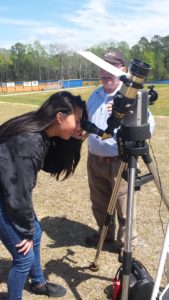 You had to look carefully, but a couple of small prominences were visible in Dennis’ H-alpha scope |
 Viewing sunspots through Frank’s white light filtered scope. |
We would like to thank the faculty and staff of Walton Middle School for the invite and warm welcome. We look forward to supporting the school’s science night activities in the future.

